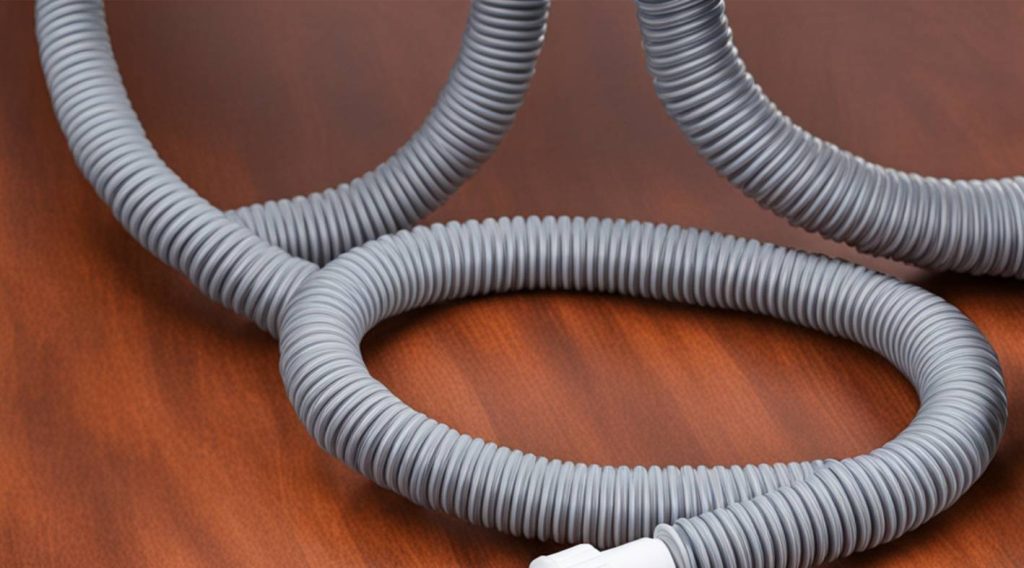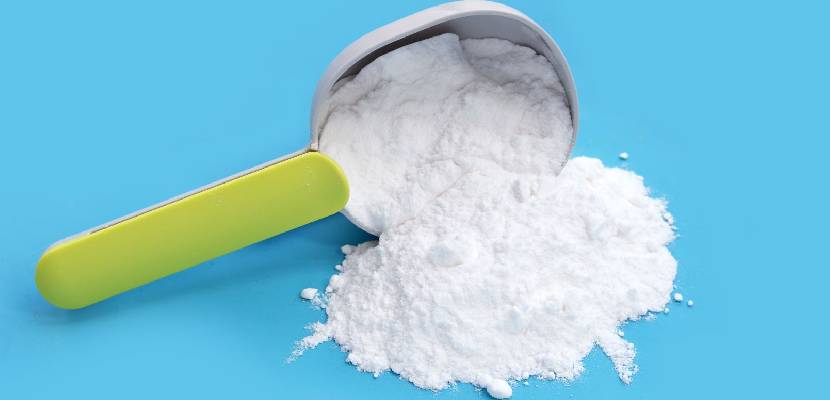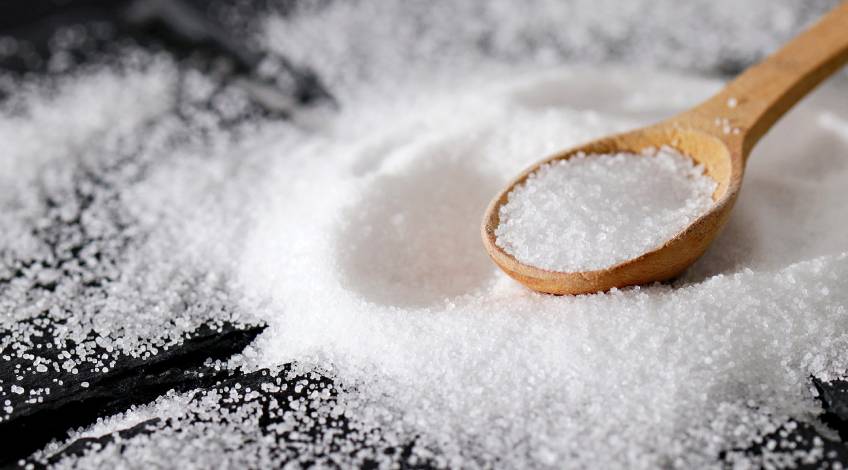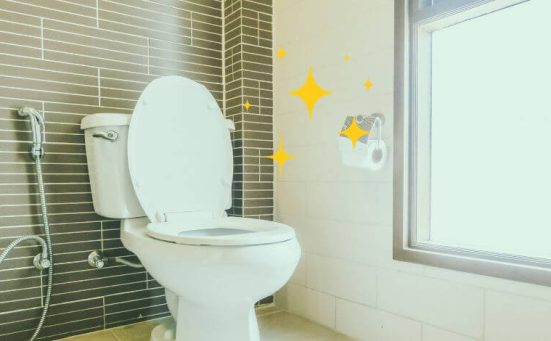
How To Fix A Clogged Washing Machine Drain Pipe (easy way)
If the drain pipe on your washing machine is clogged it will not drain properly. This can lead to washing not getting clean or even worse, your kitchen flooded with dirty water from the washer.
You will need to unclog the drain pipe which can be achieved in a number of ways. You can use hot water and washing up liquid, bicarbonate of soda, white vinegar, salt or you could use a commercial drain cleaner.
You could also use a plumber’s snake, power auger or a high pressure cleaner. There are many different ways to tackle the clogged drain pipe issue on your washing machine. However, you need to be sure that it is the actual drain pipe that’s causing the problem.
In this article we identify all of the tell-tale signs of when the drain hose is clogged as well as how you can tell that it’s blocked. We also tell you all of the ways you can unclog the drain pipe as well as other important information on this subject.
What Causes A Washing Machine Drain Pipe To Clog?

There are a number of reasons why your washing machine’s drain pipe might be clogged. The first and most common is a twisted or kinked drain hose. The drain hose is connected to your washing machine and the drain pipe.
Twisted Drain Hose
If there is a twist or kink in the drain hose it can cause dirt, debris (including hair, lint, soap scum, grease or pieces of cloth to get caught in the twist. This leads to a blockage which prevents the waste water from flowing from the machine properly.
The first place to check is the drain hose coming from your washer to the drain pipe. Remove any twists or kinks and run water down the drain hose to remove any foreign bodies caught inside the hose.
If the drain hose isn’t twisted, kinked or clogged it’s most likely one of those, or a combination of those same items that’s causing a problem in the drain pipe. That could be any of the following;
- Lint
- Hair
- Material Threads
- Pieces Of Cloth
- Grease
- Oil
- Soap Scum
- Detergent Residue
- Fabric Softener Residue
- Bacteria
- Foreign Objects
Any one or a combination of some of the above items could get caught in the drain pipe and prevent it from draining properly.
What Are The Tell-Tale Signs Of A Clogged Washing Machine Drain Pipe?

There are a number of issues that could arise if the drain pipe is clogged on your washing machine, and there are certain signs that could appear if this is the case. They include;
- Poor Drainage
If your washing machine drains slowly or doesn’t drain at all, it is a good indication that the drain pipe is clogged. - Leaking Or Overflowing Drain
If water is overflowing from the drain pipe it is a good indicator that it is clogged. - Foul Smell
If there is a backlog of waste water which allows germs and bacteria to breed, you will start to notice a bad smell coming from the drain pipe. - Error Code Displayed
Many modern washing machines now have a message system in the form of error codes. These error codes are displayed on the washer’s display screen and indicate the area of the problem that’s been detected. - Washer Door Locked
In some cases, the door of the washing machine won’t open due to excess water in the drum. This is a safety feature designed to prevent flooding your home. This feature is typically activated if there is too much water in the drum which is often caused by a clogged drain pipe. - Strange Noise
If you notice an unusual sound when the washer is draining, it is likely to be caused by a clogged drain pipe.
Clogged Washing Machine Filter
The lint trap or filter on your washing machine is another common cause of slow or no waste water draining. You should be cleaning the lint filter on your washer regularly. If not it could become clogged and prevent the waste water from draining properly or at all.
To check and clear the lint filter all you need to do is;
- Locate the lint filter (typically at the bottom front of your washer behind a flap)
- Place a shallow bowl, tray or a towel directly under the filter to catch any water that rushes from the filter once opened
- Unscrew the filter carefully (if the washer is completely full of water be prepared for a lot of water to gush out at high speed)
- Control the water flow by closing the filter whilst emptying the bowl or tray.
- Once all of the water has been removed, remove the filter and wash it under running water. Remove any foreign objects that could be causing the blockage
- Before replacing the filter, check that the pump impeller is functioning properly by turning it using your finger
- Replace the filter.
It is possible that you may have removed some form of debris including;
- Coins
- Keys
- Screws
- Nails
- Crayons
- Washers
- Nuts
- Bolts
- Hair
- Threads
- Pieces of Cloth
Many of which could have been left in the pockets of clothes washed in the machine.
How To Check That The Washing Machine Waste Pipe Is Clogged

Whilst all of the above signs are indicative of a clogged waste pipe on your washing machine, you need to be sure before tackling the problem. There are two different tests you can employ to check whether the drain pipe is clogged. Which are;
- Check The Sink
All you need to do is fill the sink in the laundry (or connected to the washer’s drain hose in the kitchen) with water. Then remove the plug and see how long it takes to drain away. If the drainage is slow or the water doesn’t drain at all, the drain pipe is clogged. - Run A Drain Cycle
Fill the washing machine with water and run a drain cycle. Watch how the water drains away, if there is water spilling from the standpipe or you notice any leaks under the sink it’s likely caused by a clogged drain pipe.
How To Clear A Clogged Washing Machine Drain Pipe
There are several different ways to clean or unclog the washer’s drain pipe, these include;
Hot Water & Washing Up Liquid
Using a combination of hot water and washing up liquid can loosen and remove most clogs in a washer’s drain pipe. You should;
- Fill a bucket with 1 gallon (4.5 litres) of boiling water
- Pour 1 cup of Washing up liquid through a funnel down the drain pipe
- Followed by the bucket full of hot water poured slowly
- This might take a while to get to the blockage and remove it
- If it doesn’t work, consider moving onto one of our other suggestions.
Hot Water & Bicarbonate Of Soda

If the washing up liquid and hot water failed to clear the blockage, try using bicarbonate of soda and hot water as a follow up. All you need to do is;
- Fill a 1 gallon (4.5 litre) bucket with hot water
- Add the contents of a packet of bicarbonate of soda to the water and allow to dissolve
- Remove the drain hose from the washer
- Pour the bucket of solution carefully through the drain hose
- Allow 10 minutes to pass
- Pour a bucket of cold water down the drain hose.
Bicarbonate Of Soda & Vinegar
Mixing bicarbonate of soda and vinegar together causes a chemical reaction that will clear all but the most stubborn of clogs. To clear the clog in this way, all you need to do is;
- Add 1 cup of bicarbonate of soda and 1 cup of white vinegar Into a bucket of boiling water
- Pour the solution down the drain pipe
- Allow 10 minutes to pass
- Pour a bucket of cold water down the drain hose
Hot Water & Salt

Salt can work just as well as vinegar in some circumstances which is why it can be perfect if the drain pipe is clogged. All you need to do is;
- Mix 1 cup of sea salt or iodised salt with 2 cups of hot water
- Pour the solution carefully into the drain pipe
- Allow 10 minutes to pass
- Run cold water through the pipe
Commercial Drain Cleaner
There are many commercial drain cleaners on the market including;
- HG Drain And Plug Unblocker
- Cillit Bang 3-in-1 Drain Unblocker
- Mr Muscle Drain Unblocker
- Plus Many More
They all dissolve clogs caused by the contents of a washing machine. To clear the drain pipe using a commercial cleaner, you should follow the instructions on the package.
Plunger
If your washing machine drain hose is connected to the kitchen sink waste pipe, it could be this that is blocked. Sometimes using a plunger can clear the blockage.
The plunger is used to force water and air down the sink waste pipe and into the main drain. You should fill the sink with enough water to cover the waste hole.
Then place the plunger over the plug hole and push down firmly. Then pull up sharply enough to cause suction. This process should be repeated several times until the water runs away freely.
This can often be enough to remove any blockage and get the drain working properly again.
Plumber’s Snake
A plumber’s snake is often the most effective way of cleaning a drain pipe but it does take some effort. It works well because you force the wire deep into the drain pipe getting right at the heart of the blockage.
It is made from a flexible wire core with more wire wound around the core. You simply push the plumber’s snake down the drain until you meet resistance.
You will then need to exert more pressure to break through the blockage. Once you feel no more resistance, the blockage has cleared.
All you need to do then is run a few buckets of hot water through the drain pipe to ensure it is running freely.
Power Auger
A power auger works using the same principle as a plumber’s snake to clear any blockage in the drain pipe. However, instead of relying on the power of your arms to force the wire through any blockage, the power auger uses electrical power.
The only energy you need to exert is just enough to push the button to start the auger on its way.
High-Pressure Cleaner
If all else fails, you could consider using a high pressure jet wash cleaner on the drain pipe. You will need to attach a pressure washer hose cleaning pipe to the pressure washer.
However, as a pressure washer is a powerful device, you will need to exercise caution if you decide to use it on your drain pipe. If you own a pressure washer you will already know just how effective it can be at cleaning dirt, grease etc from many items including;
- Driveways
- Garage Floors
- Cars
- Motorcycles
- Boats
- Fascias
- Decking
- And Many Other Surfaces
Just remember with that much pressure at your fingertips, there’s likely to be some backwash splashing.
Do You Need To Remove The Washing Machine’s Drain Hose To Clear Blockages?

Whether you need to remove the drain hose from the washing machine depends on the nature of the blockage and where it is situated. You can often clear the blockage simply by cleaning the lint filter on the washer.
In some cases running a rinse cycle using just white vinegar or white vinegar and bicarbonate of soda is sufficient to remove any blockage. However, there are times when despite your best efforts, the drain hose will need to be removed to clear the blockage.
Plus it’s never a good idea to use washing up liquid in a washing machine. Washing up liquids produce too many soap suds which can cause other problems with your washing machine. So if you decide to use the washing up liquid technique mentioned above, we recommend removing the drain hose from your machine and pouring the detergent directly down the drain hose.
SEE ALSO: What Is The Size Of A Standard Washing Machine Drain Hose?
Frequently Asked Questions
The drain pipe on a washing machine can get blocked by several things including; lint, hair, grease, detergent or fabric softener residue, pieces of cloth, material threads, debris and even bacteria.
You can unclog the drain hose on your washing machine using hot water, vinegar, bicarbonate of soda, salt, a commercial drain cleaner, a plunger, a plumber’s snake, a power auger or a pressure washer.
You can tell if the waste pipe on your washing machine is blocked if; there is poor drainage, the drain pipe is overflowing, there’s a bad smell coming from your washer and/or drain, There’s an error code displayed, the door of the washing machine is locked and won’t open or you notice a weird noise when the washer is draining.
You can remove a blockage from the standpipe that your washing machine is connected to by; using a plumber’s snake, using a commercial drain cleaner or by using a power auger.
Also, follow us on Pinterest ...



